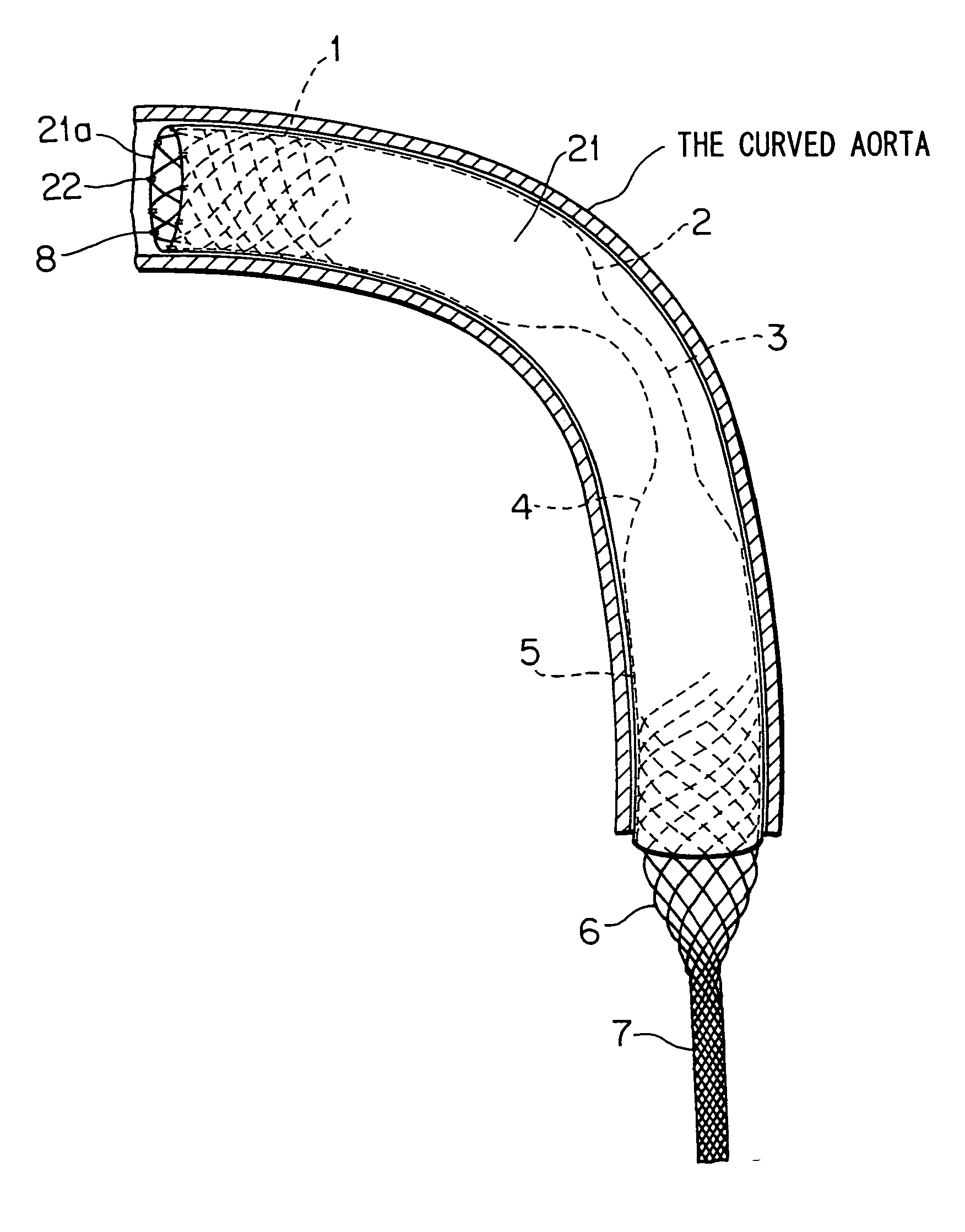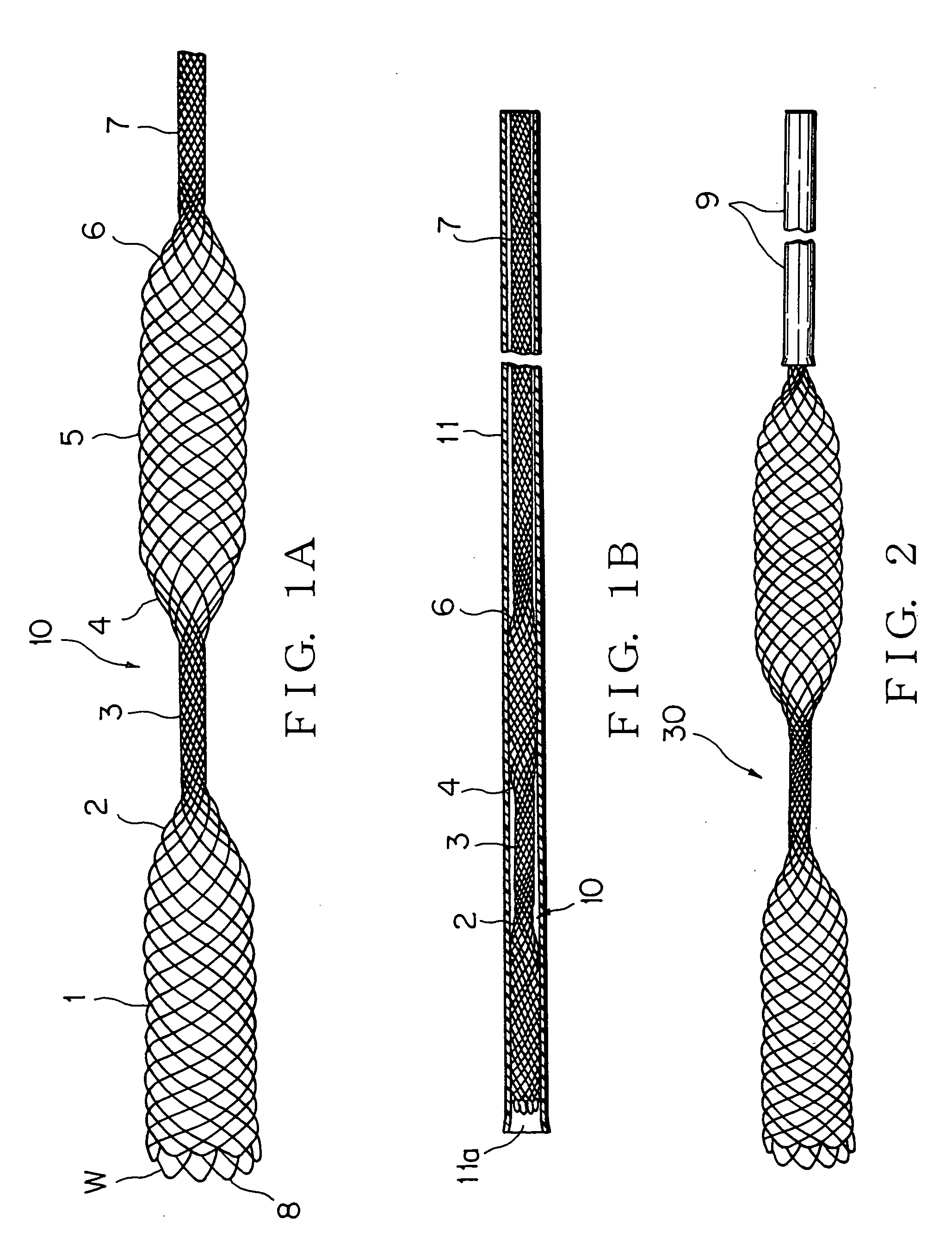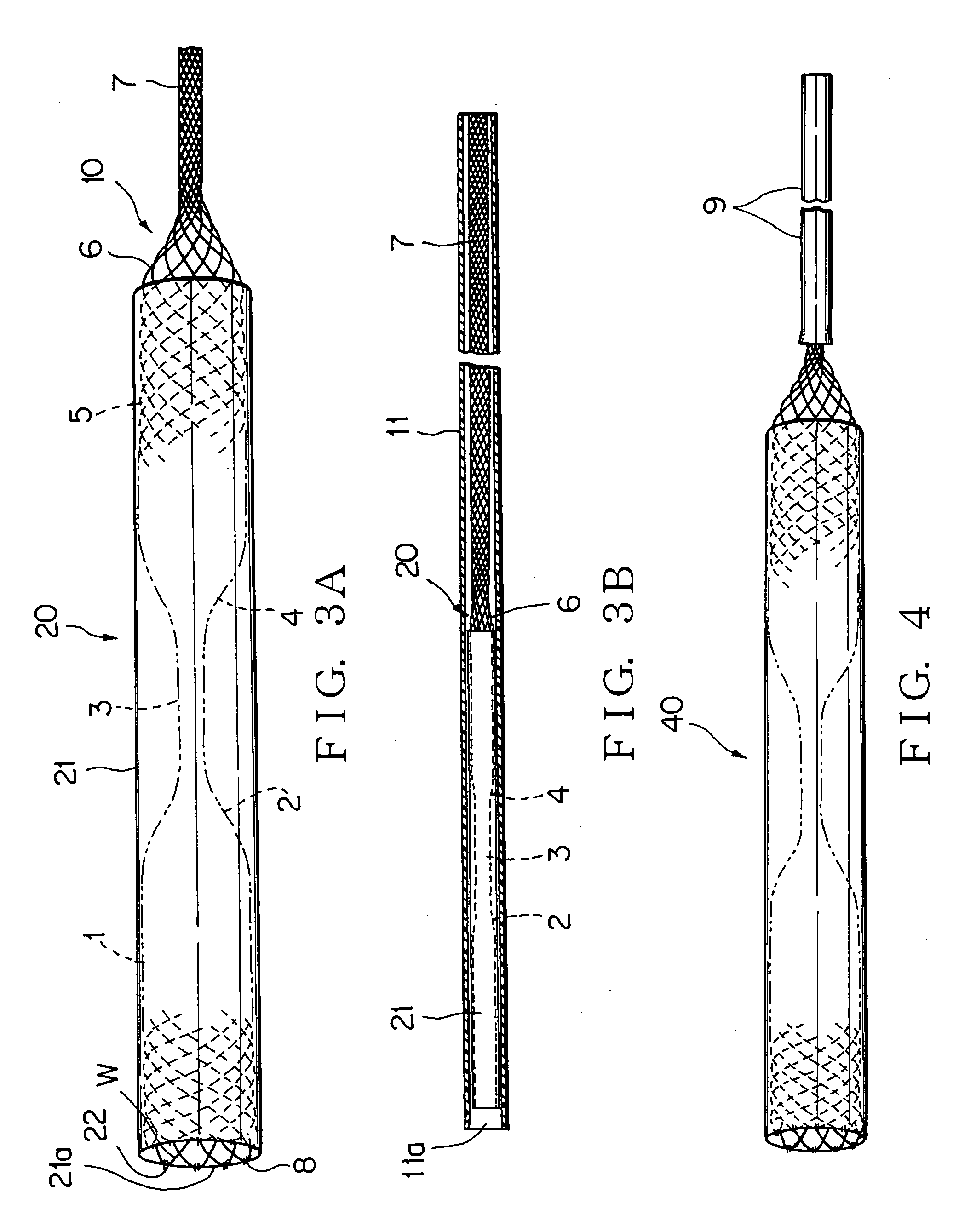Temporary stents and stent-grafts
a technology of stents and grafts, which is applied in the field of temporary stents and stent grafts, can solve the problems of affecting the applicability of surgical operations, affecting the quality of surgical procedures, and affecting the quality of surgical procedures, and achieves the effect of small diameter
- Summary
- Abstract
- Description
- Claims
- Application Information
AI Technical Summary
Benefits of technology
Problems solved by technology
Method used
Image
Examples
Embodiment Construction
[0050] The present invention will now be described by way of example with reference to the accompanying figures. FIGS. 1A and 1B are illustrations of one embodiment of the temporary stent in accordance with the present invention. FIG. 1A is an illustration of the temporary stent, and FIG. 1B is an illustration of the temporary stent which has been contained in a catheter. FIG. 2 is an illustration of another embodiment of the temporary stent in accordance with the present invention. FIGS. 3A and 3B are illustrations of one embodiment of the temporary stent-graft in accordance with the present invention. FIG. 3A is an illustration of the temporary stent-graft, and FIG. 3B is an illustration of the temporary stent-graft which has been contained in a catheter. FIG. 4 is an illustration of another embodiment of the temporary stent-graft in accordance with the present invention. FIG. 5 is an illustration of the temporary stent-graft as depicted in FIGS. 1A and 1B which has been inserted ...
PUM
 Login to View More
Login to View More Abstract
Description
Claims
Application Information
 Login to View More
Login to View More - R&D
- Intellectual Property
- Life Sciences
- Materials
- Tech Scout
- Unparalleled Data Quality
- Higher Quality Content
- 60% Fewer Hallucinations
Browse by: Latest US Patents, China's latest patents, Technical Efficacy Thesaurus, Application Domain, Technology Topic, Popular Technical Reports.
© 2025 PatSnap. All rights reserved.Legal|Privacy policy|Modern Slavery Act Transparency Statement|Sitemap|About US| Contact US: help@patsnap.com



